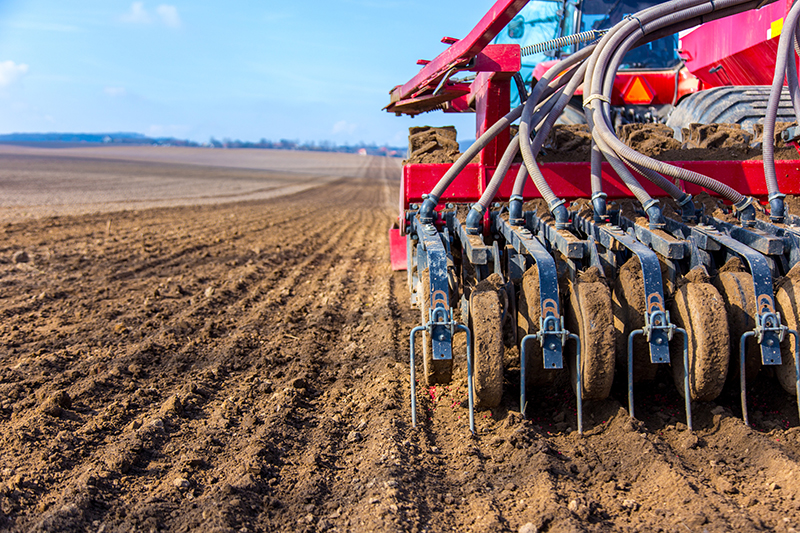By: Thom Weir, Senior Precision Agronomist, Farmers Edge
From 1987 – 89 western Canada experienced a severe and devastating drought. Record hot weather and limited rainfall left the agricultural areas parched. I was working in southern Manitoba and saw farmers struggle with this new phenomenon. They were ill prepared for these conditions. Ditches were drifted full of blow-dirt – reminiscent of the dirty ‘30s. Many of the older farmers reflected back to 1961 for their last experience with drought. I sometimes chuckled to myself at their reactions to the lack of rain. Many farmers poured on “miracle concoctions” with their herbicide application in hopes of reviving their crops. Growing up in west – central Saskatchewan, these conditions would have been considered dry but not catastrophic. However, 88 and 89 were different for these areas too. Back to back years with little or no moisture were catastrophic. I remember visiting family back there and my mother being driven to tears with the ever-present dust being blown through every nook and cranny of our 60-year old farm house. I visited a schoolmate and we went out to his lentil field to dig up un-germinated seeds. This was the middle of July. The field looked like a moonscape blown flat by the wind and dirt.
Those three years and the drought that accompanied them were destructive, not only to the farmers and their farms, but also brought on a disruptive change to the way western Canadian’s farmed. It also brought change for me. In 1990, I began 10 years of an odyssey of change in my career working with Westco Fertilizers and specifically being mentored by John Harapiak. During this period of time, I had the opportunity to work with some of the most innovative minds I can imagine. What occurred over the next 10 years was nothing short of miraculous. There was a confluence of ideas, equipment design and extension that resulted in an explosion of farmers practicing “no-till” and significant reductions in acres of summer fallow.
The result of these innovations was that by 2001-2002 when a severe and general drought returned to western Canada, the air was no longer filled by week-long clouds of dust. Crop yield were significantly reduced but not to 1988-89 levels.

The purpose of this trip back on “Memory Lane” is to set the stage for the spring of 2017. After a wetter than normal 5-6 years in many areas, growers adopted new tillage technologies under a broad banner of “vertical tillage”. There are a wide variety of units out there but what they have in common is that they leave the field black. This equipment has been marketed to get rid of excessive trash, dry out the fields and warm up the fields in the spring. They have, for the most part, delivered on these promises. However, they have also some unforeseen consequences. In reviewing an old Saskatchewan Soil Conservation Article from the early 90s, they list some of the negative consequences of tillage. They are:
- Destroys the soil cover and its structure
- Destroyed organic matter in the soil
- Enhances soil erosion
- High moisture loss
- Disrupts the lifecycle of beneficial soil organisms
- Needs more fuel, equipment and labor cost for the soil preparation
This year and specifically the last 2-3 weeks has found much of the prairies stuck in a hot, windy weather cycle. On May 24th, I found myself back in west central Saskatchewan. We were out in a field installing soil probes and a weather station. The grower who’s land we were on still practiced no-till and his land was staying put. However, in whatever direction you turned, the air was filled with brown-grey clouds of dirt. Later that day, I travelled across west central Saskatchewan and east central Alberta and saw the repeat of this observation. Field after field drifting. Each field was losing significant top soil. Research has shown that the particles blown are the smaller, more reactive particles that lead to fertile soil. To bring this home, I have included a pair of photos from a field that Farmers Edge is using on a “Field Verification Project” I am working on. The two photos are taken with a time lapse camera mounted in a lentil field SE of Regina. As you can see, this field was canola last year and was, actually no-tilled. However, the rolling of the field left little residue. You can see that from 9:00 am to 12 noon, the emerging lentils were either cut off or covered with drifting soil. While many of the plants have since re-emerged, the stand is delayed and thinner.


The other observation that I have made is the goal of drying out the field with this tillage works! The heat and wind has dried out fields to the depth of the operation. This has, in some cases, left small seeded crops like canola and flax stranded in dry soil. I saw this first hand last week – two adjacent fields, one tilled and one min-till (1 heavy harrow treatment in the spring). While the trash was heavy in some areas, emergence was good to very good. A neighbour’s field across the fence line had been vertical-tilled. It was black with very little germination. Much of the furrows had been filled with drifting soil. This field was going to need a rain to get a crop!
While I don’t advocate getting rid of your vertical tillage equipment as I have always preached that in the real world, farmers must remain flexible. I do recommend that their use be selective. Use this equipment when needed. Also, try to plan your rotations, to avoid planting two low residue producing crops (canola and lentils for example) back to back. For the farmers that didn’t farm through the drought of 87-89, take advantage of the science, agronomy and equipment innovations made during the 90s. For those who were farming during those years – sit down and remember.


